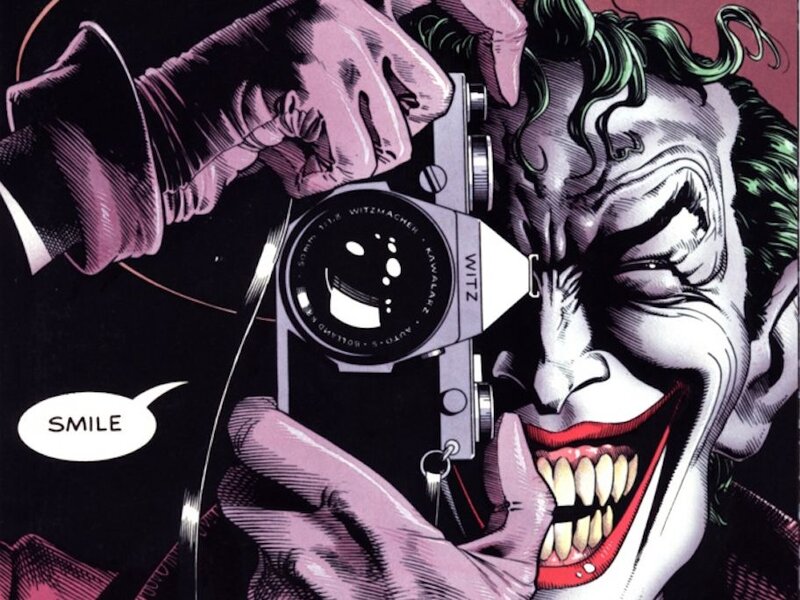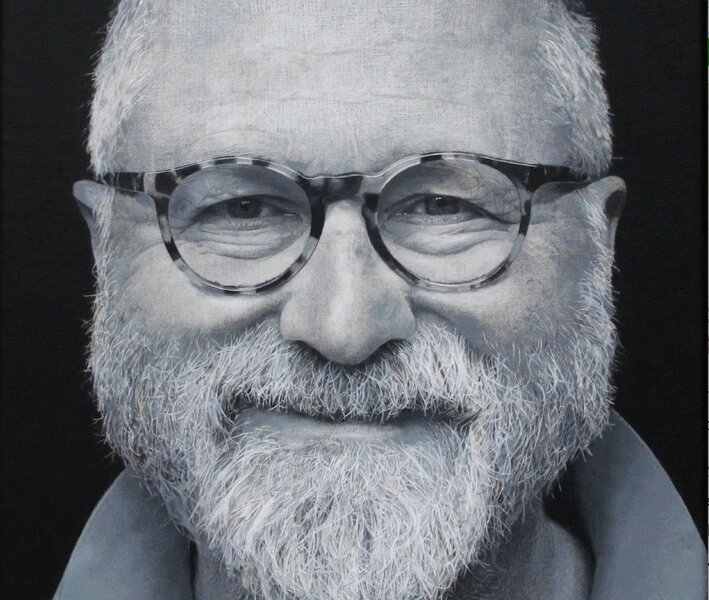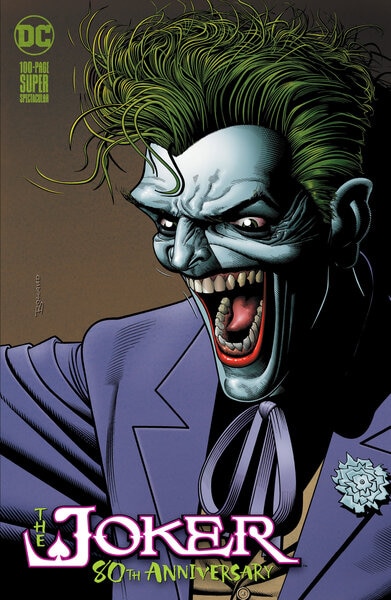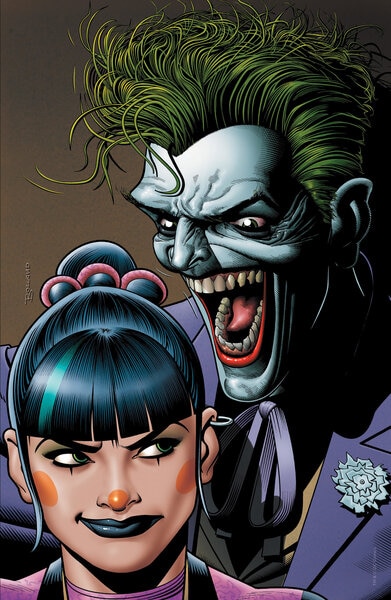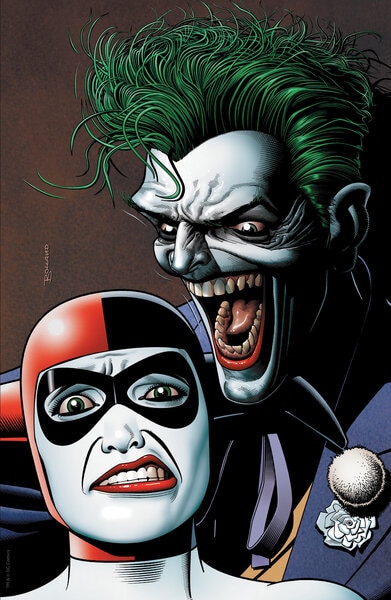Create a free profile to get unlimited access to exclusive videos, sweepstakes, and more!
Brian Bolland reveals his Joker 80th Anniversary Special covers, explains why Joker is more likable than Batman
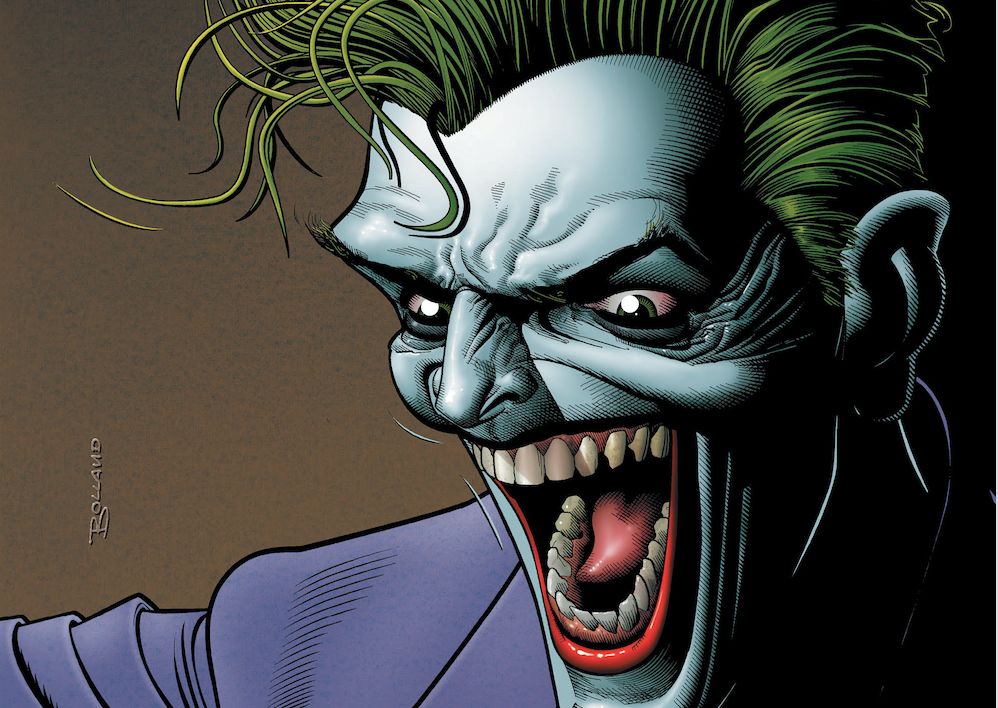
Brian Bolland is a name most comics fans instantly recognize due to the British artist's link to the seminal graphic novel Batman: The Killing Joke. He and fellow Englishman Alan Moore teamed up back in 1988 for that twisted take on the Dark Knight and the Joker, which has become one of the most influential additions to the Batman mythology; director Todd Phillips even borrowed some of the plot points for Joker.
Bolland is synonymous with many iconic titles in the 2000 AD anthology stable, most notably his gritty cover and interior work with John Wagner on a famous run of Judge Dredd stories starting in 1977. As part of the British Invasion in the late '80s, Bolland and UK colleagues Moore, Grant Morrison, Dave Gibbons, and Neil Gaiman ignited a new level of visceral storytelling in American comics that still resonates today.
Over the decades, Bolland has crafted dozens of iconic covers for DC Comics, including Batman, The Flash, Wonder Woman, and Animal Man, all conjured with his signature compositions and clean linework.
For DC Comics' Joker 80th Anniversary Super Spectacular (out April 29), this Eisner-winning artist was asked by DC Entertainment's Eddy Choi to create three special variant covers for Cover Alpha Comics — and SYFY WIRE is offering an exclusive peek at all the insanity.
We also spoke with Bolland about his memorable Joker projects, how these unsettling new portraits were designed, and why the psycho supervillain has remained such a pivotal character in the DC Universe.
You have a long association with the Clown Prince of Crime, especially your collaboration with Alan Moore on Batman: The Killing Joke three decades ago. What strikes you as compelling about this mad supervillain who's become such a cornerstone of the DC Universe?
As an artist, I don't really relate to the muscley superhero type. Occasionally an editor will say "do us an action shot." I don't really know how to do that. My first question is: "Yes, but what is it they're doing?" Batman and the Joker aren't really super-action types. They exist, in my mind, more in the world of silent German Expressionist cinema or film noir.
Batman works best for me when he's still. Maybe just the cape moving. Joker is theatrical. Batman is remote and unknowable. Joker performs for us the audience. I think of the two he's more relatable, likable. He's the star of the show. We enjoy his antics. That's why it's fun to push what he does beyond what is acceptable.
What do you remember most about working with Alan Moore and what did that iconic project teach you about comics and the industry?
Alan and I had been pals for a long time while we were working for 2000AD but we'd never worked on anything together. Through Titan Books there were plans afoot for Alan and me to do Alan's skewed take on the American superhero trope called Rocket Redglare and even a Batman vs. Judge Dredd one-off but neither came to anything. I felt it inevitable that we'd do something together at some point.
Once Alan came on board with Killing Joke we settled into our usual role of writer and artist. I did suggest it should be more a story about the Joker with Batman as a more background figure. Beyond that I never interfere with the writer's story. Alan only rang me once while he was writing. He was going through a difficult and dark patch. I think it was to do with the maiming of Barbara Gordon.
How did you arrive at your design choices for these Joker 80th Anniversary covers?
Well, I had very little to go on. I didn't have a setting or a location for the Joker and Harley. Big headshots seem to be my trademark. I think I've got to the point with Joker where I've run out of new ways to show him. In this case, I just threw his mouth wide open.
When it came to Harley, I then realized the pointy thing on the side of her head with a fluffy ball on the end had to be fitted in somewhere. In front or behind Joker's chin. I had to decide.
What influences did you consider for this insane iteration of the legendary Batman foe?
I don't think there were any external influences. I don't buy or read any comics so I don't know how other artists are portraying any characters or what's being published. I've lived with Joker in my head for so many years I can make him perform.
My version of the Joker seems to have been accepted as a kind of default version from which others are at liberty to diverge I think.
How did you envision adding Joker's girlfriends past and present, Harley Quinn and Punchline?
I'm quite slow these days. My covers take a long time. When they're done I like to get them sent and then forget about them. When Eddie emailed me and asked for a version without Harley I was frankly a bit annoyed.
Removing Harley was more complicated than adding Punchline. Where Harley had previously been there was no Joker. Nothing. I had to go back to the line version, paint out Harley. Draw Joker's body (vest and jacket. We in the UK would call that "waistcoat and jacket") and then recolor the entire picture again, including all that green hair.
Once that version was complete it was much easier to draw Punchline separately and float her on a new layer on the Harley-free version. I have no idea who Punchline is. Eddie had to send me [a] reference. The artist's work looks very manga-influenced to me. I thought maybe she was Japanese. I had to ask Eddie what was her ethnicity. He told me Caucasian. Apparently a few artists have asked that.
You've created memorable Joker covers for books like 1995's Wonder Woman #96 and #97 and last year's Year of the Villain: The Joker. What makes a Bolland cover stand out and do you have a favorite Joker cover over the years?
I think it must have been when I was drawing Wonder Woman covers. I was looking at copies of Vogue magazine and I realized that a big head shot with the person looking you right in the eye is a very arresting image. I must say I think the cover of The Killing Joke is fortuitously brilliant. And I don't think the idea came from anyone but me. If I'm wrong, somebody please correct me.
It's only after publication that I realized that, although, with his usual winning charm, he's inviting you to smile, enjoy yourself. It is a depiction of the moment when he is committing his most evil and disgusting act. Having read the book you have to see the cover in a different light.
There was one Joker cover that I drew in pencil but it never made it to print. The Joker, his back to us, the viewer, is opening his coat, apparently flashing Wonder Woman. She, as you'd expect, is reacting with horror. What we don't know until we read the story inside is that he's wearing an explosive vest under the coat. An alternative version of that turned up on the Wonder Woman issue you mentioned.
Why does this character endure and why is he the perfect nemesis to the Dark Knight?
Why does he endure? Good question. Why is [he] the top villain? I think it's because we like him. He always has a cheery smile on his face! There was once a story by Harlan Ellison called "'Repent Harlequin' Said the Ticktockman." The Ticktockman was a force for law and order, good timekeeping. The Harlequin was a force for unbridled chaos, tomfoolery — and fun.
I think the two forces are very salient in us all. Those two elements were very much in the Judge Dredd stories. And very much in Joker vs. Batman. Joker is fun. Who wouldn't want to push a henchman under a bus for a laugh?
Did you see Joaquin Phoenix in Joker and what were your impressions?
Yes, I saw Joaquin Phoenix in Joker. I meant to write a lengthy essay about what I thought of it. He deserved his Oscar. I'm glad it proved popular and controversial. The thing that interested me the most and proved very moving is that the "laughing condition" is a real thing.
To me, and this may be controversial for legal reasons, I think the best version of the Joker is Paul Leni's 1928 silent film The Man Who Laughs. Phoenix's portrayal brought out the same element of tragedy as that earlier performance by Conrad Veidt.
As one of the creators discovered by the American comics industry to start the British Invasion 40 years ago, how has the industry evolved and where do you see its future heading?
I'm not really the person to ask that question. I haven't really seen a comic book or a graphic novel in 20 years or more — unless it had my cover on it. I often don't even look inside. I understand there are some very good independent graphic novels about. Whenever I see them in a bookshop I flip through them, intrigued. I guess there will be more and more film and TV adaptations of comics.
I don't entirely disagree with Martin Scorsese's recent criticism of superhero movies. I'm pretty sure the comics industry will outlive me.
